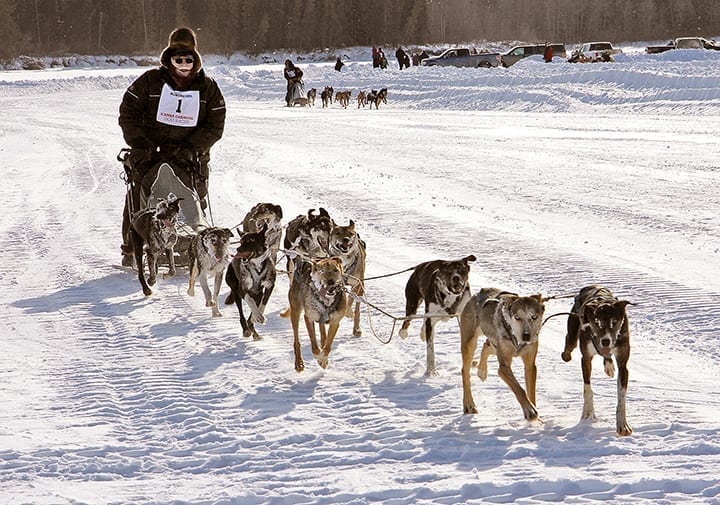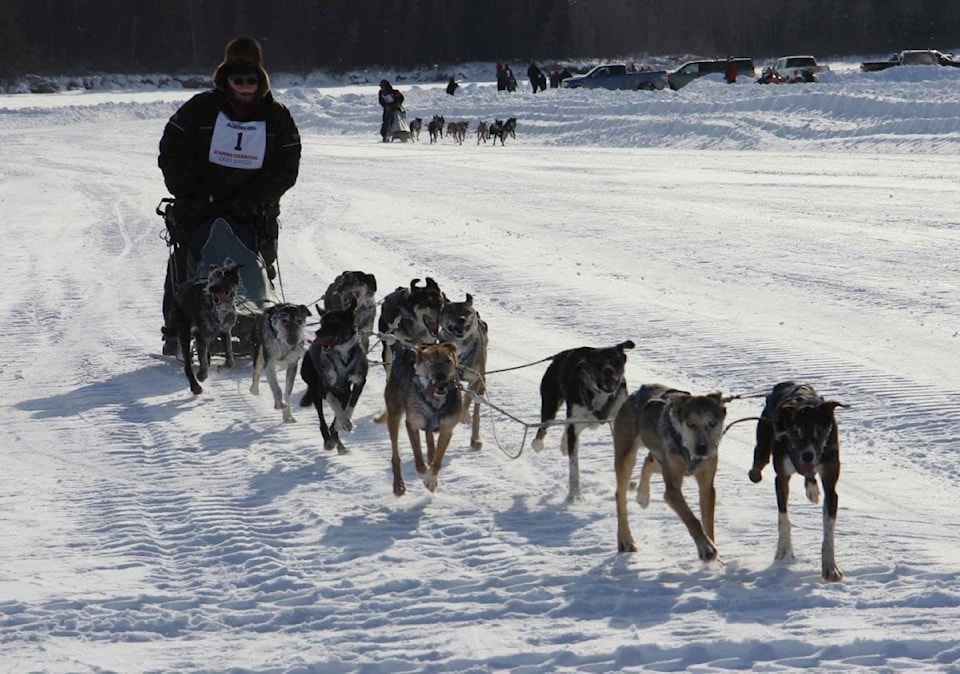Bess Ann McKay of Fort Resolution has been involved in dog mushing for about 35 years, and she helps co-ordinate races in many places.
And that includes K'amba Carnival's dogsled races, which is one of the highlights of the annual winter festival on the Hay River Reserve.
"I did it last year, as well," McKay noted. "I don't mind helping out. I love the sport."

NNSL file photo
She said that, whenever there's a carnival with dog mushing, it's probably the highlight event.
Dogsled racing attracts visitors and brings elders together to talk about the tradition, she said. "Everybody gets together and it's just so nice to see that."
McKay noted there will be a few changes this year for the dogsled races at K'amba Carnival.
"There has been an increase in the purse to a total of $18,825," she said.
That breaks down to a $13,000 purse for the 10-dog races, compared to $10,000 last year.
The six-dog races will have a $5,000 total purse, plus there is prize money for the three-dog and one-dog races.
There will also be a new start time for the 10-dog races on March 7 & 8.
McKay said those races will now start at 11 a.m. each day, an hour later than the start time last year.
She added that the six-dog races will most likely start at about 2 p.m. on each of the two days.
The 10-dog races will still have a mass start at the ice crossing to the Old Village on the Hay River Reserve, and the dogs will run up the Hay River to the bridge and back for a total of 18 miles.
The six-dog races will begin at a different location – at the main ice crossing between Hay River and the New Village on the Hay River Reserve.
"The six-dog starts there and they go around that loop for the 10-dog track, which is 12 miles," McKay said, noting that is an increase in the distance for the six-dog teams.
She pointed out that the races on the river can be easily watched by people.
"It's visible," she said. "You can see the six dogs from the bridge. So it's spectator-friendly, and you can watch the race."
There is also a change for the four-dog races.
"We're going to run the four dogs one way from the main crossing back to the Old Village, and that's the junior race," said McKay, noting that will be a timed start, not a mass start.
She added that the four-dog races will be quite interesting this year because some of the competitors have qualified for the upcoming Arctic Winter Games in Whitehorse.
At the end of their races, the mushers lend dogs so youngsters can have short one-dog races to experience the sport.
McKay is not certain how many teams will sign up for this year's races.
However, she noted there were 14 entries in the 10-dog races and 14 in the six-dog races last year.
"I'm quite confident that we'll have that many racers," she said.
Where the teams are coming from will be discovered at registration, although McKay expects some from Yellowknife and Fort Resolution.
McKay is assisted in organizing the races by Fort Resolution's Elizabeth Giroux, who helps with co-ordinating and timing, and by Fort Smith's Sholto Douglas, who is the race official.
